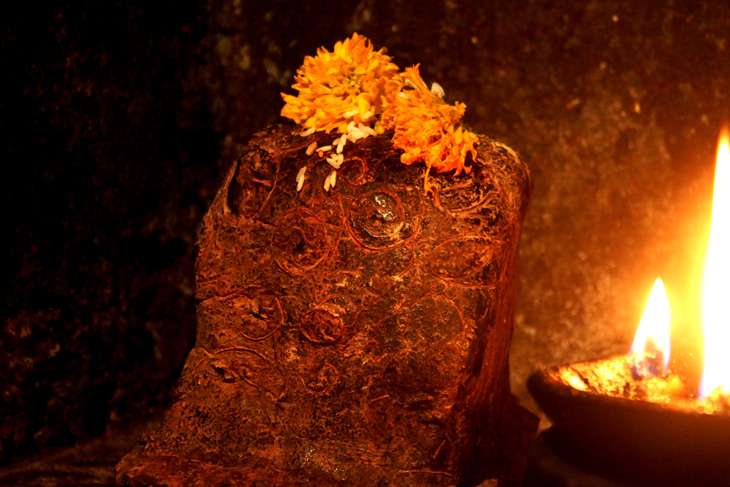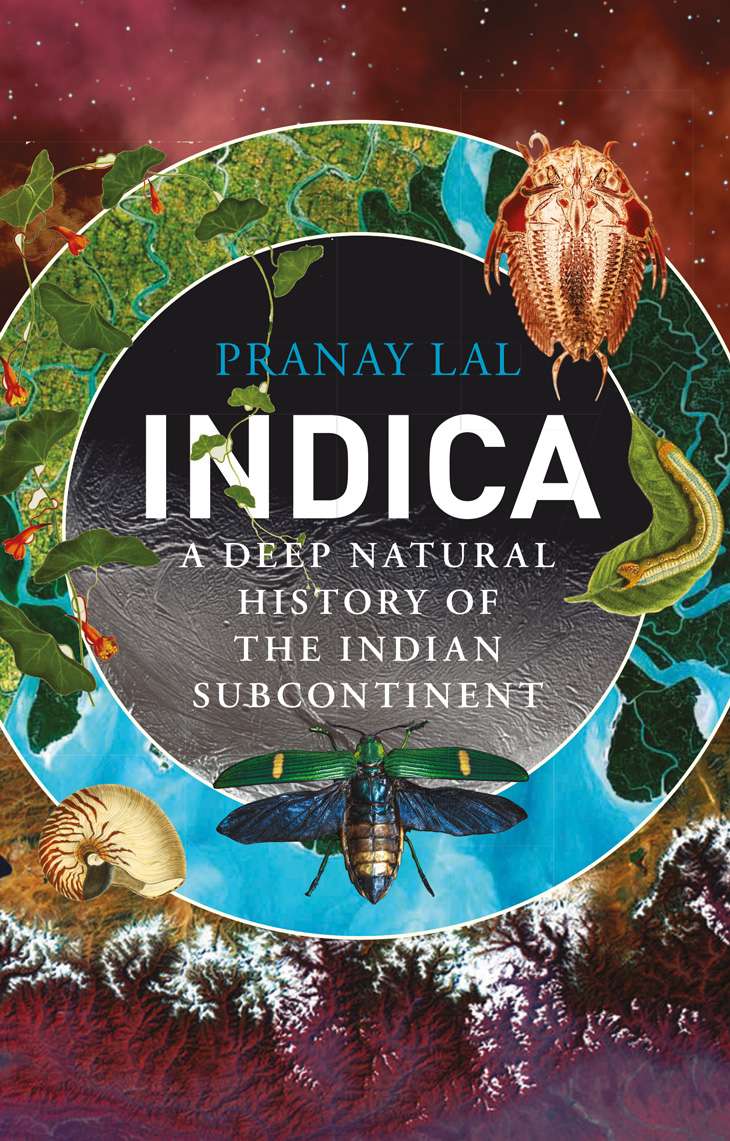Did you know that India was home to fierce reptiles & fantastic dinosaurs?

It took Pranay Lal 22 years of research and four years of writing to tell the five-billion-year-old story of the Indian subcontinent or as he calls it - Indica. It was Lal's deep love for nature that the magnanimity of the project did not unnerve him and he worked relentlessly to quench the thirst of those, who like him, have often looked out of their windows and wondered "why there is a river in one place and not another" or "why rocks in one place look different from those elsewhere".
Lal had the advantage of growing up in the lap of nature. His childhood was spent swimming in ponds, following bird catchers and snake charmers, and the nights were spent lying on his back watching the stars.
His voyage, so far, has been documented in Indica: A Deep Natural History of the Indian Subcontinent published by Penguin.
In Indica, he tells us that the exquisite caves of Ellora were carved from rock formed in the greatest lava floods the world has known, that Bengaluru owes its unique climate to a tectonic event that took place 88 million years ago, that the Ganga and Brahmaputra sequester nearly 20 per cent of global carbon and that Rajasaurus, an Indian dinosaur was perhaps more ferocious than T-rex.
Lal's book is truly the first compelling narrative of India's deep natural history, filled with fierce reptiles, fantastic dinosaurs, gargantuan mammals and amazing plants.
"I did not find any book of this kind which I would have loved to read, so I ended up writing it!" Lal tells Catch.
Of course, the bigger project playing on his mind is to make his readers fall in love with nature. And he leaves them with little option:
"If the granite rocks of Ramanagara, some of which seem perched precariously one on top of the other, look familiar, it is because they provided the hideout of the archetypal villain Gabbar Singh in the film Sholay!"
Lal describes himself as a biochemist and an artist.
"Yes, my training (as a biochemist is) to incessantly research and document helped in giving a shape and form to my love, wonder and curiosity about nature."
In this interview with Catch he talks about his beautiful voyage and what is the role of God in his scheme of things.
He also hopes that he is able to get this book out in regional languages so that cheaper editions are available to readers across the country.

Edited excerpts from the interview:
LH: I love the way you employ Nigel Calder's analogy of imagining the 4.6 billion-year-old earth as a 46-year-old woman. When you embarked on this mammoth project did you also see Earth as a woman who flowered in her middle age?
PL: I wanted my readers to get a sense of the sheer enormity of time in a way that was easily identifiable and when I was pointed out to this elegant analogy by a dear friend, I thought that it works very well to convey what I wanted.
The Earth-Woman blossomed in her middle ages but after that there were several times when it withered and came back with a fresh flush and new set of spectacular creatures.
LH: So Nandi Hills, part of the Dharwar craton, is the earliest building block of the Indian land mass?
PL: The oldest rocks are along the Dharwar craton, of which Nandi hills is a part and it is one of the earliest building blocks of India.
LH: I also like the way you stir up the reader's interest by throwing in the mundane - the granite rocks of Ramanagara being likened to Gabbar's hideout in Sholay. How difficult was it to take your academic hat off?
PL: I am a movie buff and I love travelling, so for me associating rocks and landscapes with Sholay or David Lean's A Passage to India or The Gods Must Be Crazy came naturally!
LH: You took 22 years to research and four years to write this up. What were the biggest hurdles in this voyage?
PL: The enormity of telling a five-billion-year-old story and also deciding on how to organise the various strands of sciences into comprehensible stories in each chapter were a major challenge.
I was very fortunate to find several experts who helped me understand the full picture, but it was up to me to put this as simply as possible for the reader to feel connected.
LH: You have been in awe of nature because you've been fortunate enough to experience it early in life. Is this book then also an exercise to make your readers fall in love with nature?
PL: Absolutely. Once you fall in love with something, you try to protect and preserve it. I would like readers to have an inquiring mind about policies that impact the environment, understand climate change, conservation efforts and the effects of human interventions.
LH: Is there then no role of the gods in your scheme of things?
PL: I am currently immersed in understanding nature. I am sure there is a place for God in the scheme of things, but I have not yet come to that place.

LH: They've been innumerable theories of the world ending. How do you think will the world end? What will become of our subcontinent?
PL: Do you mean extinction of all life on Earth? I am sure no scientist can say with any degree of certainty of how all life can get wiped out. To my mind, unless a massive collision takes place, like the one that created Earth and the Moon, all life cannot be wiped out.
Some life will survive even in a massive nuclear event, and that gives hope that life will re-emerge and proliferate into new varieties.
LH: Did your academic background help in this endeavour?
PL: Yes, my training to incessantly research and document helped in giving a shape and form to my love, wonder and curiosity about nature.
LH: If you hadn't written this book, which book do you think would have come closest to being the most definitive natural history of the Indian subcontinent?
PL: I did not find any book of this kind which I would have loved to read, so I ended up writing it!
LH: What's your next project?
PL: I will continue to work on natural history. There are several facets of natural history that need to be researched and written about. I don't have a clear project yet but I will let ideas evolve before narrowing down to a few subjects.
First published: 22 December 2016, 23:16 IST






![BJP's Kapil Mishra recreates Shankar Mahadevan’s ‘Breathless’ song to highlight Delhi pollution [WATCH] BJP's Kapil Mishra recreates Shankar Mahadevan’s ‘Breathless’ song to highlight Delhi pollution [WATCH]](https://images.catchnews.com/upload/2022/11/03/kapil-mishra_240884_300x172.png)

![Anupam Kher shares pictures of his toned body on 67th birthday [MUST SEE] Anupam Kher shares pictures of his toned body on 67th birthday [MUST SEE]](https://images.catchnews.com/upload/2022/03/07/Anupam_kher_231145_300x172.jpg)






